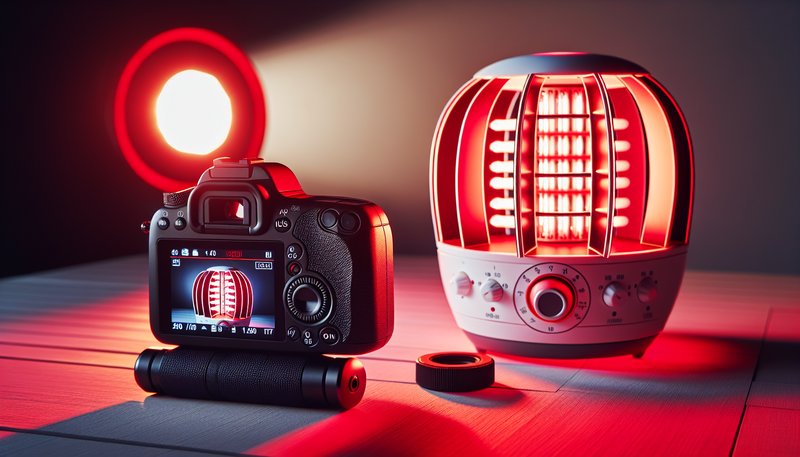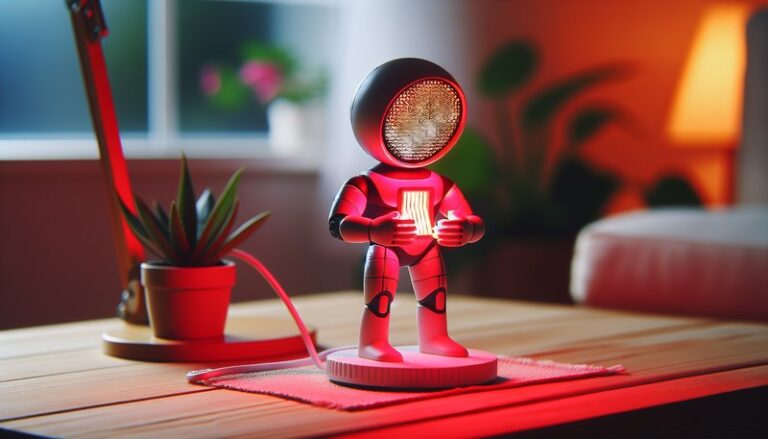Does Red Light Therapy Help Wrinkles?
Does Red Light Therapy Help Wrinkles?
Are you tired of seeing fine lines and wrinkles every time you look in the mirror? Many are turning to innovative treatments like red light therapy in search of youthful rejuvenation. In this article, we will explore whether red light therapy can effectively help reduce wrinkles, delving into the science behind the treatment, its benefits, considerations, and alternatives.
Key Takeaways
- Red light therapy is a non-invasive treatment that promotes collagen production, which can diminish the appearance of wrinkles.
- While many users report positive outcomes, results can vary, necessitating realistic expectations.
- Combining red light therapy with a comprehensive skincare routine may enhance its effectiveness.
What is Red Light Therapy?
Red light therapy (RLT) is a treatment that employs low-wavelength red light to stimulate various cellular functions. This therapy aims to improve skin health, reduce inflammation, and promote healing. Originating from studies on photobiomodulation, RLT has gained popularity for its perceived anti-aging effects, particularly in reducing wrinkles and fine lines. The therapy works by penetrating the skin layers, enhancing cellular energy production in mitochondria, which leads to improved collagen and elastin synthesis.
Background of Red Light Therapy
The historical roots of red light therapy can be traced back to its use in clinical settings for wound healing and pain relief. Over time, its applications have broadened, with many skincare professionals and enthusiasts advocating for its efficacy in tackling signs of aging.
What are the Benefits of Red Light Therapy?
Red light therapy presents several benefits for individuals seeking a non-invasive method to improve the skin’s appearance. The following points will explore these advantages in detail.
Enhanced Collagen Production
One of the primary benefits of red light therapy is its ability to stimulate collagen production. Collagen is crucial for skin elasticity and firmness. With increased collagen levels, skin can become plumper and smoother, reducing the visibility of wrinkles.
Improved Skin Texture and Tone
Regular red light therapy sessions can enhance overall skin texture and tone. Many users observe a reduction in rough patches and an improved glow, providing a more youthful appearance.
Reduced Inflammation and Healing Time
Red light therapy can help reduce inflammation and accelerate healing processes. This is particularly valuable for skin prone to redness or irritation, allowing for a calmer, healthier complexion.
Promotion of Cellular Regeneration
The activation of cellular metabolism through RLT promotes faster cell turnover. This means old, damaged skin can be replaced with new, healthy skin more quickly, helping reduce the appearance of aging.
Discover the insights in Do they work?
Is it Possible to Use Red Light Therapy to Reduce Wrinkles?
Yes, using red light therapy to reduce wrinkles is not only possible, but it has also become a popular option among those seeking to combat signs of aging. However, it’s essential to understand that results may vary based on the individual’s skin type, the severity of the wrinkles, and the treatment’s consistency.
What are the Advantages of Using Red Light Therapy for Wrinkles?
Non-Invasive Treatment
Red light therapy is non-invasive, meaning there’s no need for surgery or significant downtime. This makes it an attractive option for those wary of more aggressive treatments.
Accessibility
With the rise of at-home RLT devices, users can conveniently incorporate this therapy into their skincare routine without needing frequent appointments at spas or clinics.
Minimal Side Effects
Red light therapy is generally considered safe, with minimal side effects. Most commonly, users experience mild warmth and redness after treatment, which typically subsides shortly after.
What are the Disadvantages of Using Red Light Therapy for Wrinkles?
Variable Results
While many individuals see improvements, some may experience minimal to no change. Since results can vary, it’s essential to manage expectations and understand that RLT is not a guaranteed solution for everyone.
Time Commitment
Achieving noticeable results often requires regular treatments over an extended period, which can be a time-consuming commitment.
Initial Cost
While home devices exist, the upfront investment can be significant. Professional treatments at clinics may also add up over time.
What are the Things to Consider Before Trying Red Light Therapy?
Before starting red light therapy, it’s essential to consider several factors to ensure it aligns with your skincare goals and lifestyle.
Skin Type
Individuals with specific skin types or conditions, such as sensitivity or active skin irritations, should consult with a dermatologist before starting RLT.
Treatment Consistency
For optimal results, it’s crucial to commit to regular treatment sessions. Consider how RLT fits into your current skincare routine and schedule.
Device Quality
If opting for an at-home device, invest in a quality product that meets safety standards and provides adequate wavelengths for effective treatment.
What are the Alternatives to Red Light Therapy?
For those looking to address wrinkles without red light therapy, several alternatives may also provide effective results.
Chemical Peels
Chemical peels involve applying a solution to exfoliate the outer skin layers, promoting new skin growth and reducing the appearance of wrinkles and fine lines.
Microneedling
Microneedling creates tiny punctures in the skin to stimulate collagen production. This technique also enhances the absorption of skincare products, potentially improving results.
Laser Therapy
Laser treatments utilize focused light to target skin concerns. They are effective in reducing wrinkles but may require more downtime compared to non-invasive options like RLT.
Conclusion: Is it Recommended to Use Red Light Therapy for Wrinkles?
In summary, red light therapy can be a beneficial addition to your skincare regimen for targeting wrinkles. While many users report positive results, factors like skin type, treatment frequency, and device quality can influence effectiveness. Prospective users are encouraged to consult with skincare professionals to tailor the approach to their individual needs.
Frequently Asked Questions
How often should I use red light therapy for wrinkles?
For best results, many professionals recommend treatments 2-3 times a week, but personal routines can vary based on individual skin needs.
Can red light therapy cause skin damage?
No, red light therapy is generally considered safe and does not cause sunburn or damage associated with UV light; however, one should always ensure that devices are used correctly.
Are results from red light therapy permanent?
While improvements can be long-lasting, maintenance treatments may be necessary over time to sustain the effects. Regular use combined with a solid skincare routine can yield the best outcomes.
What types of devices are available for red light therapy?
Devices range from professional-grade machines used in clinics to at-home LED masks and handheld devices, allowing for a variety of options based on preference and budget.
Is red light therapy suitable for all skin types?
Generally, yes, red light therapy is suitable for most skin types. However, people with certain skin conditions should consult a dermatologist before starting treatment to avoid complications.
Check out our insights on “Does Red Light Therapy Impact Blood Pressure?”





